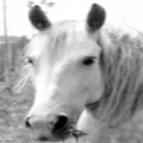High Horse: PETAs anti-fur game campaigns still miss the point
Raccoons would be wearing suits made of human skin if they could


High Horse is a rotating opinion column in which GamesRadar editors and guest writers are invited to express their personal thoughts on games, the people who play them and the industry at large.
It’s not easy being a horse, especially a horse at GamesRadar. As Senior Wildlife Editor and the only quadruped on staff at this sad publication, you’d think I’d be the first writer this group turned to for the premier of this weekly column. It’s called “High Horse” for goodness sake! To wait this long for a High Horse column written by an actual horse is an insult to readers. But most importantly, it’s an insult to me. Maybe I should start my own GamesRadar column called “Opinions by Fat and Lazy Human Gamers” and not invite any of my non-horse co-workers to participate. That would show them. But I digress.
Today, I’m here to talk about People for the Ethical Treatment of Animals (PETA). Every year, it seems we can count on the human-run organization to produce at least one mini-Flash game designed to criticize a popular title of note in the name of animal rights – and this year was no exception. PETA’s most recent “pro animal” title, Super Tanooki Skin 2D, wags a stern finger at Mario fans, criticizing the return of the iconic Tanooki raccoon suit in Super Mario Land 3D for the Nintendo 3DS.
GamesRadar News Editor Henry Gilbert recently outlined some of the reasons why PETA’s slam on Mario isn’t consistent with the organization’s anti-fur agenda. As Gilbert points out, the suit is cruelty-free, granted by a magical leaf. But like PETA (and most non-horses), Gilbert ignores the most important reason why PETA’s Super Tanooki Skin 2D game misses the point: raccoons are dangerous.
In fact, following sharks and bears, raccoons are the number one threat to America. My many attempts to warn your kind of the North American raccoons’ dangerous appetites have been dismissed (much like the way I was dismissed for the first three weeks of this column). The misguided notion that raccoons require an organization of humans, like PETA, to protect their kind from other humans would probably not exist if anyone had actually taken the time to talk to a raccoon. Fortunately for you, in addition to human English, I am also fluent in the North American dialect of Raccoonese.
“I first tasted human flesh when I was about two,” admitted one anonymous raccoon source who we’ll call Rocky from here on. “I was foraging in a human trash bin in the suburbs of Hayward, California. You know the kind I’m talking about. Those big plastic ones they leave outside their dwellings on Sunday nights. It’s always on Sundays.”
“Anyhow, I was digging past all these empty boxes of cereal and caught the side of what appeared to be a whole orange! You can imagine how excited I was. But all of a sudden I found myself losing balance. Before I knew it, I was falling from the lip of the bin. When I looked up, the fur near my right ear was wet with blood – and I saw a boy, a human boy with a slingshot.”
Sign up to the GamesRadar+ Newsletter
Weekly digests, tales from the communities you love, and more
It was the last mistake that human boy ever made. “I couldn’t believe that motherf****r! I returned to the dwelling later that evening with a few of my friends. We snuck into the boy’s bedroom through his window. He was delicious.”
It’s easy for humans to forget that raccoons are omnivores. This means they eat plants and animal meat. And for many raccoons like Rocky, the sweetest meat can be found on human boys between the ages of four and seven. “To this day, I have never tasted anything so succulent, so moist,” explained Rocky. “We dragged the remains to our home and enjoyed the leftovers for weeks!” Just as Native Americans made sure to use every part of the buffalo, the North American raccoon makes sure that no part of its prey goes to waste.
“By the time we were done, there was nothing left but bones and hair. We used the bones to reinforce the walls in our tree hollow. The hair was knitted into a comfy blanket, which helped keep me extra cozy that winter.”
It wasn’t long before Rocky and his posse switched from foraging to hunting full-time. Like so many North American raccoons living in urban areas, Rocky finds it hard to return to a diet of mostly rotten produce when there are so many delicious human children with open bedroom windows. “Don’t get me wrong. I still like oranges. But if I have a choice – and thanks to these human tract housing projects, there’s always a choice – it’s human boy-kabobs or nothing,” said Rocky, nodding to himself solemnly while pawing his necklace of ears.
Today, Rocky continues to promote the all-human-boy diet to fellow raccoons and any non-human mammal that will listen - and is working on launching his first line of human boy apparel. “Check this out,” said Rocky, who pulled out a lumpy hat fashioned from human skin and hair. “I call it a boyskin cap. Get it?”
Consider yourself warned, PETA. Instead of wasting resources on unfunny satires targeting fictional game characters, your organization may want to stop worrying about raccoon skins, and start worrying about your own skins.



